 |
POLISH
CHRISTMAS EVE AND POLISH EASTER |
 |
| We kept Polish tradition
in Australia : POLISH WIGILIA : CHRISTMAS EVE on 24 December - winter in Poland. |
 |
|
|
 |
|
Xmas
card dated
1923 |
|
I have kept this ancient Polish tradition and I am happy to see my children and their families are following it with enthusiasm. Wigilia in a sense is what being Polish is all about. And I am sure they will pass this tradition on to their children.
|
|
|
|
|
Eventually,
when Australian community of Polish ancestry and tradition grows larger,
oplatek might be offered here over the Internet, like in the United
States of America. It is best to order just at the beginning of December to allow enough time for delivery to Australia for Xmas. Using Standard Shipping it takes about 15-16 days.
|
|
TYPICAL
TRADITIONAL WIGILIA DISHES |
|
|
|
|
 Christmas on Bondi Beach, Sydney |
|
|
Part 2 - COLD BUFFET |
|
|
 
|
  |
|
|
 
|
  |
|
|
   |
|
|
  |
| BREAK The table is totally cleared except for drinks. Small plates and desserts are placed on the table. |
|
Part
4 - DESSERTS

|
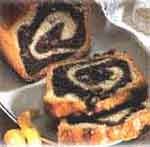 |
|
 |
|
| 20th century - Christmas memories |
|
|
London
- Christmas 1965 |
London
- Christmas 1965 |
|
|
London
- Christmas 1965 |
London
- Christmas 1965 |
Now we can go to Australia ! |
14 days later we left London for a new life in Australia. |
|
London
- Julian's Christening - 1966 |
Australia
— Christmas 1967 |
|
|
Australia
- Christmas 1968 |
Australia
- Christmas 1968 |
|
|
Australia
- Christmas 1969 |
Australia
- Christmas 1969 |
|
|
Australia
- Christmas 1970 |
Australia
- Christmas 1970 |
|
|
Australia
- Christmas 1970 |
Australia
- Christmas 1971 |
|
Photo taken
through the open front door of uncle Edi's house in Ealing (London)
- the Polish community "ghetto" area at that time. |
London
- Christmas 1972 |
London
- Christmas 1972 |
|
|
London
- Christmas 1972 |
Back
in Australia - Sydney - Christmas 1975 |
|
|
| We kept Polish tradition in Australia : |
| POLISH EASTER and EASTER EGGS - springtime in Poland |
 |
|
 Easter card dated 1914 |
|
|
 |
|
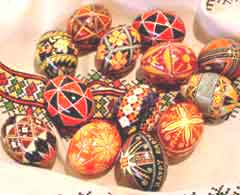 |
|
|
|
|
|
| ZUREK
(ZHOO-rek) sour rye soup with potato, sausage and egg. This traditional Easter Sunday hot soup is welcome after initial feasting on cold buffet.
|
 zurek (zhurek, zhoo-rek) |
 zurek with potatoes |
|
 bigos - hunter's stew (see recipe above). |
|
|
BLESSING
OF THE FOOD — "SWIECONKA" |
|
|
|
|
The items
that have to be there are eggs (most
important), the little lamb, kielbasa, horseradish
and salt for sure, and of course bread and babka
- the little "sweet bread" with ruffled sides. Easter basket for "Swieconka" |
|
 Year 1918 |
|
|
 Merry
Christmas !
Merry
Christmas ! 


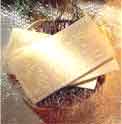 OPLATEK
is now available in Australia four weeks before and until Christmas
from any Polish church after a mass, or a catholic church where Polish
masses are held. Check with Polish clubs or consulate for the location.
There is very small charge for the oplatek.
OPLATEK
is now available in Australia four weeks before and until Christmas
from any Polish church after a mass, or a catholic church where Polish
masses are held. Check with Polish clubs or consulate for the location.
There is very small charge for the oplatek.

 where oplatki are small, both parents take one oplatek each and each
of them then breaks off a small piece of their spouse's oplatek. The
parents exchange a kiss and good wishes. The same touching ceremony
is repeated between the parents and their children as well as among
the children themselves.
where oplatki are small, both parents take one oplatek each and each
of them then breaks off a small piece of their spouse's oplatek. The
parents exchange a kiss and good wishes. The same touching ceremony
is repeated between the parents and their children as well as among
the children themselves.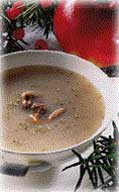
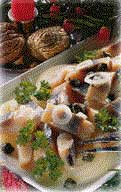
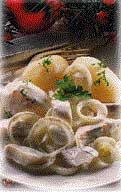
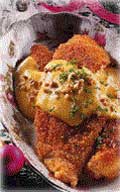
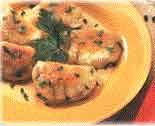







 get
presents in the morning !
get
presents in the morning !  But
Christmas Day food is totally different from Christmas Eve menu. There
are meats like smoked ham, smoked bacon, leg of lamb, also gingerbread
type cakes and delicious tortes — but not as plentiful as at
Easter. Cooking is avoided. Only previously cooked food is heated
such as "bigos" - hunter's stew of sauerkraut and diced
meats or leftovers from wigilia (for recipe
see Easter below - picture on the right >>).
But
Christmas Day food is totally different from Christmas Eve menu. There
are meats like smoked ham, smoked bacon, leg of lamb, also gingerbread
type cakes and delicious tortes — but not as plentiful as at
Easter. Cooking is avoided. Only previously cooked food is heated
such as "bigos" - hunter's stew of sauerkraut and diced
meats or leftovers from wigilia (for recipe
see Easter below - picture on the right >>).







 Celina
3.5 years
Celina
3.5 years








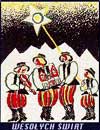 In front of Christmas tree in uncle Edward's house during children's
visit to London, England.
In front of Christmas tree in uncle Edward's house during children's
visit to London, England. 



 When
the dyed eggs are cooled, the designs are scratched in the dye film
on the surface of the egg by using a sharp metal implement, for example
tip of a penknife, a pin point or edge of razor blade (with care).
I prefered an old fashioned elastic razor blade because it is flexible
and slides, while a rigid instrument can pierce the egg shell.
Most frequent designs drawn by scratching technique are flowers and
geometric patterns.
When
the dyed eggs are cooled, the designs are scratched in the dye film
on the surface of the egg by using a sharp metal implement, for example
tip of a penknife, a pin point or edge of razor blade (with care).
I prefered an old fashioned elastic razor blade because it is flexible
and slides, while a rigid instrument can pierce the egg shell.
Most frequent designs drawn by scratching technique are flowers and
geometric patterns. 

 Easter
food in Poland is very rich in cold meats and special cakes after
40 days of lent and fasting. My parents, for example, had
only bread and water on Good Friday while I was given one salted herring
and tea for the whole day.
Easter
food in Poland is very rich in cold meats and special cakes after
40 days of lent and fasting. My parents, for example, had
only bread and water on Good Friday while I was given one salted herring
and tea for the whole day.  THE
FEAST
THE
FEAST 





 The
blessing of the Easter food takes place on Saturday
morning before the Easter. Small portions of symbolic food are brought
in a small basket to the Polish church to be blessed by the priest.
There is no Mass, but short prayer and a hymn is sung while
the baskets are sprinkled with holy water and blessed.
The
blessing of the Easter food takes place on Saturday
morning before the Easter. Small portions of symbolic food are brought
in a small basket to the Polish church to be blessed by the priest.
There is no Mass, but short prayer and a hymn is sung while
the baskets are sprinkled with holy water and blessed. 
 We
proceed down across the ages. Beginning with the oldest versus the
next eldest (the parents first), they crack by gently tapping the
point of one egg against the other's pointy end, once, or if necessary
a bit harder the second time.
We
proceed down across the ages. Beginning with the oldest versus the
next eldest (the parents first), they crack by gently tapping the
point of one egg against the other's pointy end, once, or if necessary
a bit harder the second time. 
